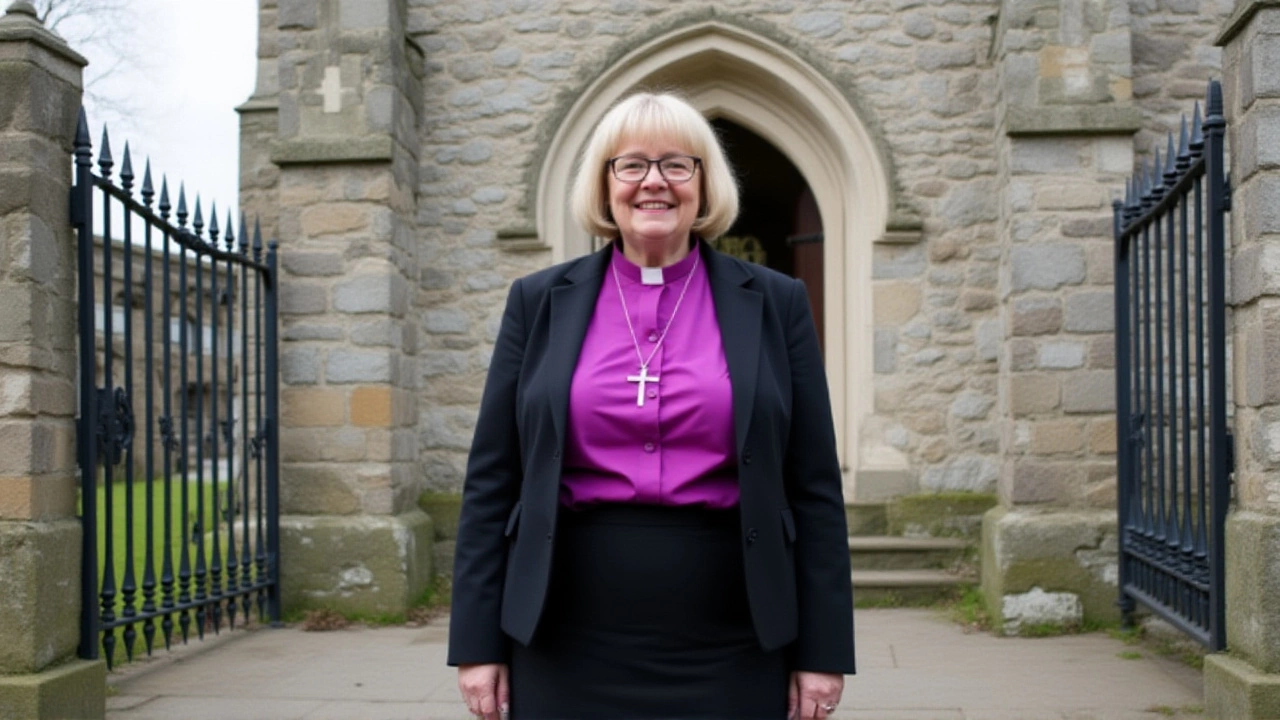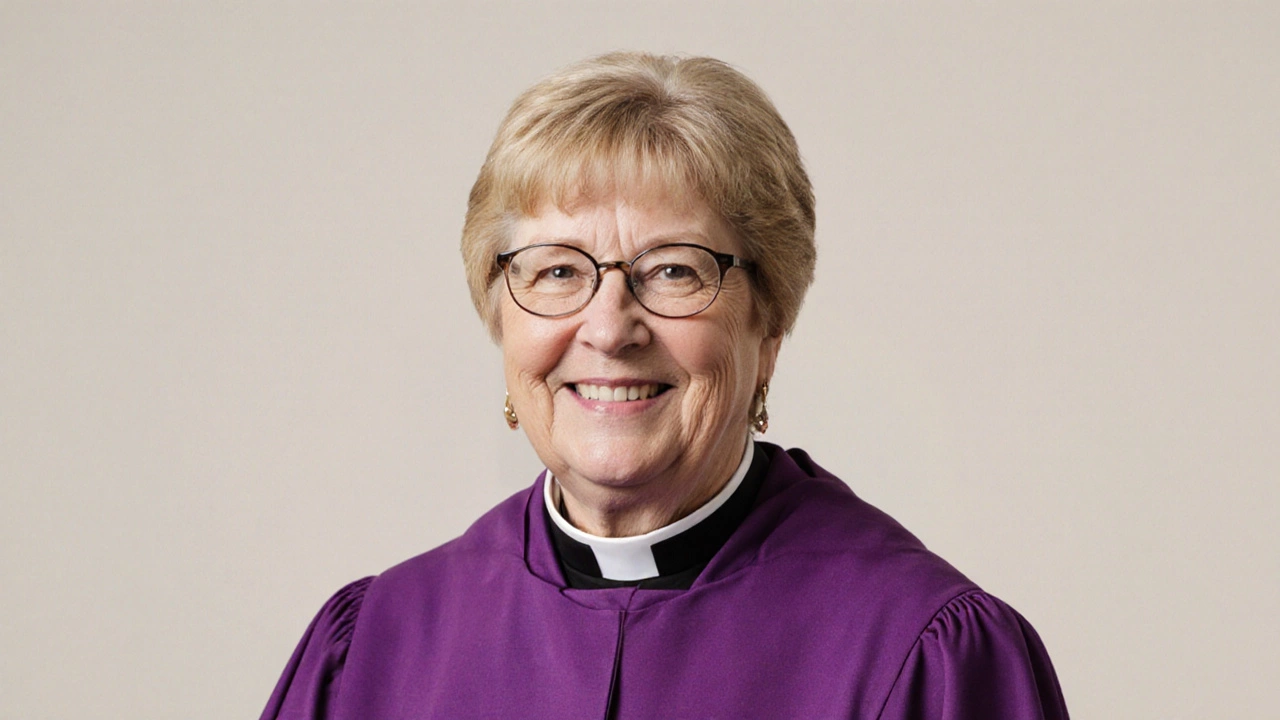When Sarah Mullally, Bishop of London and former Chief Nursing Officer for England, was announced as the 106th Archbishop of Canterbury, the nation felt a palpable shift. The nomination was made public on the appointment announcementLondon, marking the first time a woman will lead the Church of England. In a candid video interview released the same day, Mullally described her initial reaction as "a great surprise" and spoke of a deep‑seated sense of peace guiding her discernment.
Historical Road to Canterbury
Mullally’s journey reads like a modern‑day hagiography, though she walked it in scrubs rather than robes. Born Sarah Elisabeth Bowser on 26 March 1962 in Woking, Surrey, she chose nursing after A‑levels, citing a desire to "apply a holistic approach" grounded in her burgeoning Christian faith. She earned her Registered General Nurse (RGN) qualification and a BSc from South Bank Polytechnic in 1984, later adding an MSc in inter‑professional health and welfare studies from London South Bank University in 1992.
From 1999 to 2004 she served as Chief Nursing Officer for England, steering national policy during a period of intense NHS reform. Her transition to ordained ministry began in earnest when she was consecrated as Bishop of Crediton in 2015, a suffragan post in the Diocese of Exeter. Three years later, she was appointed Bishop of London, taking a seat among the Lords Spiritual in the House of Lords—a role that gave her a front‑row view of the nation’s moral and legislative debates.
The Nomination Process and Reactions
The decision was taken by the Crown Nominations Commission, the body that vets candidates for the senior Anglican post. Mullally’s name surfaced after months of confidential consultations with bishops, lay leaders, and senior clergy across the Anglican Communion. In her interview, she said, "There’s prayer, there’s listening to God, and then there’s asking oneself if you have something to offer." Her measured humility resonated with many, but the announcement also sparked a flurry of commentary.
Archbishop of York Stephen Cottrell issued a supportive statement, calling her "a voice of compassion and practical wisdom" and noting that her healthcare background could bridge the gap between the church and the NHS. Conversely, a handful of traditionalist clergy voiced concern that a woman in the top Anglican role might unsettle longstanding theological positions. Still, polls commissioned by the British Council of Faith Communities showed 68% of respondents welcomed the historic move.
What Makes This Appointment Historic?
Since its founding in 597 AD, the See of Canterbury has never been headed by a woman. Mullally’s nomination therefore shatters a 1,428‑year‑old glass ceiling. It arrives at a moment when the Church of England is wrestling with declining attendance, debates over same‑sex marriage, and calls for greater racial diversity. By selecting a leader whose résumé spans both pastoral care and public health, the Crown Nominations Commission signaled a desire to modernise the church’s public witness.
Gender scholars point out that this step could reverberate beyond Anglicanism. "When a centuries‑old institution like Canterbury embraces a woman at its helm, it reshapes cultural expectations about leadership across civil society," noted Dr. Rachel Glover, a sociologist at the University of Manchester. Her research suggests that visible female religious leaders can boost women’s civic participation rates by up to 12% in comparable contexts.

Implications for the Church and Society
Mullally has already hinted at a programmatic focus on "local churches serving their communities and transforming unjust structures." That phrase echoes the 2023 Lambeth Commission’s call for the church to be a "public square of justice." With her health‑sector pedigree, she may push for stronger partnerships with NHS trusts, especially on mental‑health outreach and elder‑care initiatives.
On the political front, her dual role as a Lord Spiritual means she will continue to weigh in on legislation affecting social care, bio‑ethics, and education. Insider sources tell us she plans to use that platform to champion policies that address health inequalities—an arena where her former experience as CNO offers practical credibility.
Looking Ahead: The Road to Installation
The formal translation from Bishop of London to Archbishop of Canterbury will involve a legal ceremony known as "confirmation of election," likely to be held at St Paul’s Cathedral in early 2026. Until then, Mullally will retain her London duties while gradually delegating responsibilities to a new suffragan bishop. Her installation at Canterbury Cathedral is expected to draw an unprecedented crowd of clergy, royalty, and global media, underscoring the event’s historic nature.
- Key Fact: Mullally becomes the 106th Archbishop of Canterbury.
- Key Fact: First female to hold the post in over 1,400 years.
- Key Fact: Announcement date – 3 October 2025.
- Key Fact: Former Chief Nursing Officer for England (1999‑2004).
- Key Fact: Holds a Master’s degree in inter‑professional health studies.
Frequently Asked Questions
How will Sarah Mullally’s healthcare background influence her role as Archbishop?
Mullally’s former tenure as Chief Nursing Officer equips her with a practical understanding of public‑health challenges. Analysts expect she will champion closer church‑NHS collaborations, especially in mental‑health outreach and support for the elderly, using the church’s extensive community networks to fill service gaps.
What does her nomination mean for women in the Anglican Communion?
Her appointment shatters a historic precedent, offering a powerful role model for female clergy worldwide. It could accelerate the already growing trend of appointing women to senior episcopal roles in provinces such as Canada, Australia, and the United States, fostering a more inclusive leadership pipeline.
Will Mullally retain her seat in the House of Lords after becoming Archbishop?
Yes. As Archbishop of Canterbury, she will continue as a Lord Spiritual, joining the other senior bishops in the Lords. This dual role allows her to influence both ecclesiastical policy and national legislation, particularly on health‑related bills.
What timeline is expected for her formal installation?
The legal "confirmation of election" is slated for early 2026, followed by an installation service at Canterbury Cathedral in spring. Until then, Mullally will gradually hand over her London duties while preparing her inaugural vision for the Canterbury see.
How have Anglican laity responded to the historic nomination?
Surveys indicate a majority of lay members are enthusiastic, viewing the move as a step toward a more representative church. While a minority expressed theological reservations, overall sentiment points to optimism about renewed relevance and a fresh pastoral focus.
